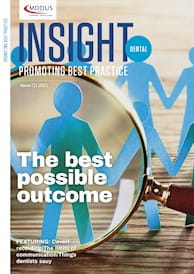I HAVE been fortunate that, after several early missteps, I have found a career where I have felt like a round peg in a round hole. It is fulfilling, constantly interesting and speaks to my values, personality and disposition. I have often known when a project or role was not a good ‘fit’ simply by observing whether the work gave me a feeling of being energised or prompted ambivalence or even reluctance. It has, for the most part, been a good barometer in evaluating what to prioritise and where I might best add value.
Recently, I was cleaning the bathroom and removed the plug in the basin. Into the exposed round hole fell an equally round lid from a bottle. It wedged into the space. Despite my Heath Robinson-inspired attempts to remove it with improvised tools ranging from tweezer to knives, it remained stubbornly stuck. Aside from showing how unsuited I am to any role involving practical skills, it was a domestic moment that has remained with me. There are risks to round objects in round holes: they may become stuck, obstructive and ultimately problematic.
What does this have to do with ethics? I’ve been working recently on how to develop a functional and effective clinical ethics group, committee or support service. It seems that 2020 has been the year of clinical ethics. The pandemic prompted a flurry of interest in, and expectations of, clinical ethics. New committees were hastily convened. Existing groups found that they were busier than they had been since being established. Individuals with any kind of training or expertise in ethics were in demand to support individuals, teams, organisations and government departments.
I have, like many colleagues, been part of this clinical ethics fever dream in which people convened quickly and in a context of uncertainty. Some of the groups with which I work have risen admirably to the challenge. Others have struggled. I have been reflecting on what the factors are that contribute to a clinical ethics group’s success and impact. Of course, there are many variables; it is probably impossible to distil what is causative and what is confounding. I do have some observations though. It doesn’t matter whether the group is established or new.
Resources are unquestionably helpful, but don’t seem to make the difference one might imagine. Some of the most effective groups I know are run as self-sustaining communities with little or no practical support. Personal qualities or virtues such as commitment, humility, respect and curiosity naturally make for good individual members of clinical ethics committees or groups, but do not necessarily translate into collective effectiveness. The chair – and I speak as one myself – has a vital role to play in attending to the group’s function and in facilitating a safe and open environment in which people can speak freely and listen carefully; yet that seems necessary but not sufficient.
What does seem to be a common function of effective ethics groups is avoiding the round peg problem where there are large numbers of shaped pegs sitting too comfortably in their identically shaped holes. Clinical ethics discussions and decisions flourish not only with pegs of different types coming together, but crucially where those pegs are able to sit with what might sometimes be uncomfortable, unfamiliar or difficult. It is the facility to explore the ‘other’, to imagine difference, to test positions and perspectives that are not one’s own, to recognise nuance, to expect contradiction and nuance, to develop insights into what it is like to work differently, to have contrasting priorities and to resist patterns of thinking, interacting and doing.
It is to both learn and unlearn. To learn about the concerns, ideas and methods of others and to unlearn the habitual, the familiar and the assumed. That is not to say that one doesn’t remain a round peg searching for a round hole. However, one has to be prepared to recognise and mitigate the risks of too comfortable a fit, to oneself, to the quality of the discussion and to the group. To do clinical ethics well is to resist being stuck.
As someone who naturally aligns with virtue ethics and narrative, I need to sit with utilitarian arguments. I need to be questioned by the group member who is sceptical of virtue and thinks about populations. I need to be challenged by the libertarian. I need to be forced to explain ‘so what’ when I lapse into academic analysis. I need to be prepared to imagine what it is to think and be a differently shaped peg. Collectively, we need to recognise the round hole problem before we can even begin the ethical discussion.
May we all become and be surrounded by pegs of all shapes who move with agility and compassion into unfamiliar spaces.
Deborah Bowman is emeritus professor of Bioethics, Clinical Ethics and Medical Law at St George’s, University of London
This page was correct at the time of publication. Any guidance is intended as general guidance for members only. If you are a member and need specific advice relating to your own circumstances, please contact one of our advisers.
Read more from this issue of Insight Dental

Save this article
Save this article to a list of favourite articles which members can access in their account.
Save to library
